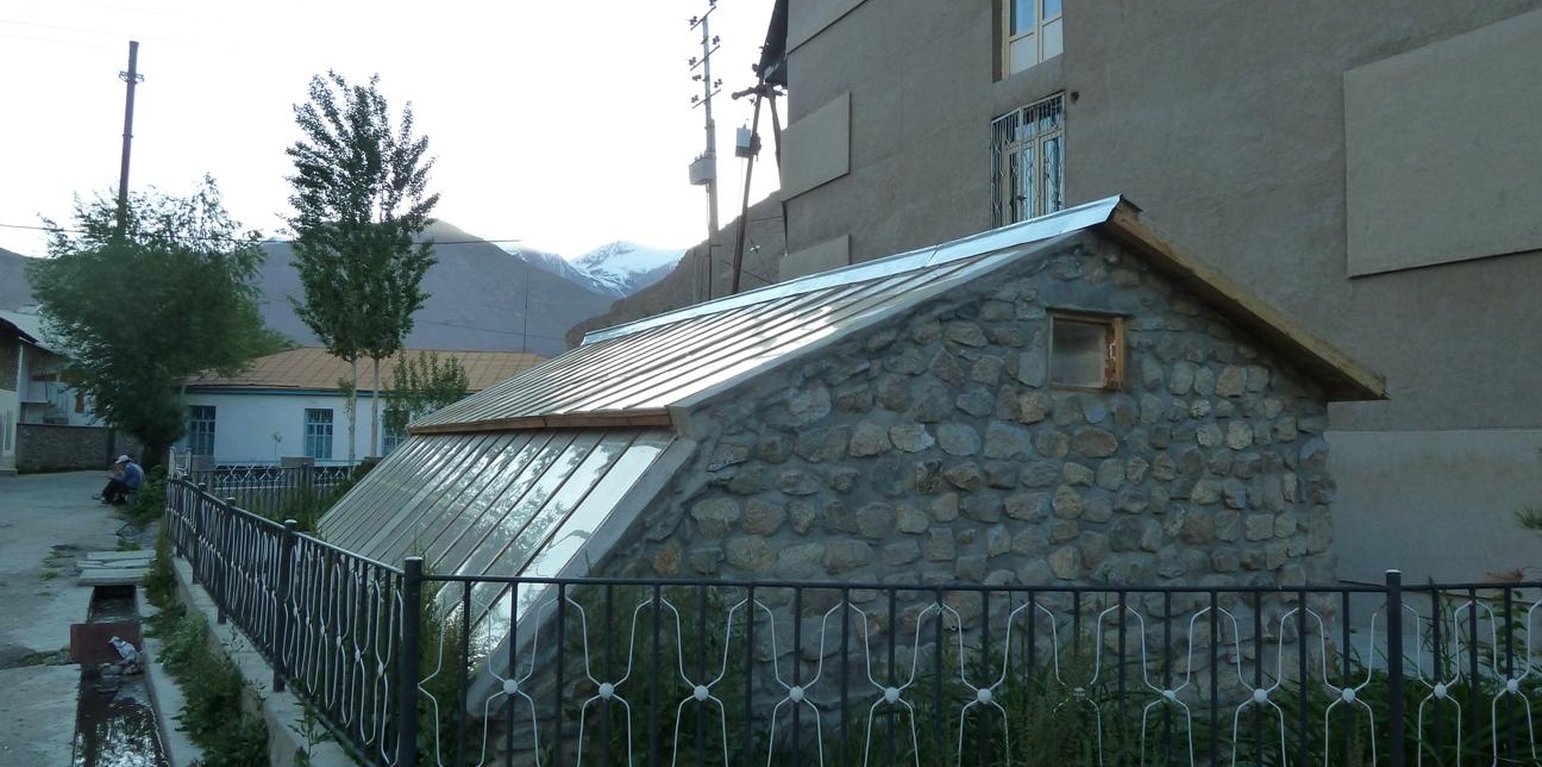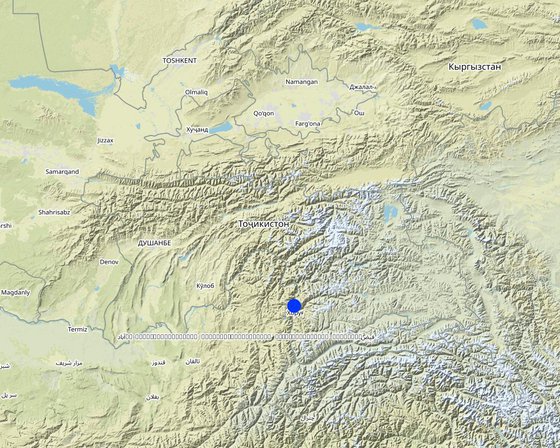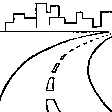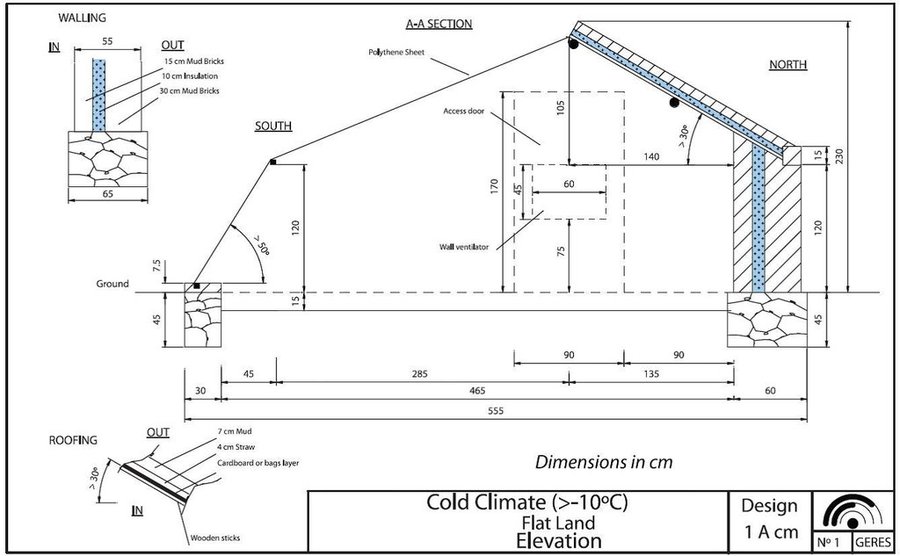



A passive solar greenhouse is a greenhouse heated entirely by sunlight, with no additional fuel-based heating. In the Pamirs, the temperature inside these greenhouses can be kept high enough to grow vegetables throughout the year, even in winter if the greenhouse is built efficiently. Thus greenhouses can be of great use, particularly in those areas where there are continuing concerns about food security and economic development. These greenhouses were developed by GERES (Renewable Energy and Environment Group) and ICIMOD (International Centre for Integrated Mountain Development) and first tested with farmers in Ladakh, India. MSDSP adopted the idea and introduced it to the GBAO region in Tajikistan establishing 3 demonstration greenhouses in collaboration with farmers in the Shugnan district in 2010.
Purpose of the Technology: A solar greenhouse aims to trap and intensify the heating effect of solar radiation and thus enables plants to be grown that cannot be grown under the normal (outside) ambient conditions. Solar greenhouses are particularly useful in areas where there is a lot of sunshine in winter, but where the air is too cold for growing crops. The main benefits of solar greenhouses are that vegetables can be grown during the winter, helping to fulfill basic subsistence needs of people in remote areas and income generation through selling the produce.
Establishment / maintenance activities and inputs: A greenhouse is only efficient if it is constructed in the right place, in the right way, and is used properly. An efficient solar greenhouse should be designed along an east-west axis, with the length of the south face increased and angled to present the largest possible surface area to the sun, the size of the east and west facing walls reduced to minimise heat loss and provide shade inside the greenhouse, and the north wall should be heavily insulated.
The following steps are required in constructing an efficient greenhouse: (1) selecting an appropriate place: there needs to be a source of running water close to the greenhouse, solar radiation needs to be sufficient (sunrise should be before 9.30 and sunset after 3.00 pm even on the shortest days of the year), the land has to be flat and dry; (2) selecting the most appropriate design: (see manual); (3) constructing the foundation: digging a trench and filling the foundation with mud mortar; (4) preparing the floor; (5) building the double walls separated by one insulation layer; (6) making and installing an access door; (7) making and installing the wall ventilator; (8) constructing the roof; (9) making and installing the roof ventilator (shutter); (10) installing the polyethylene shutter; (11) installing night insulation.
Natural / human environment: The greenhouses were established in three villages of Shugnan district: Buni, Sokhcharv and Darmoracht. Two of these villages are located at about 2,500 metres a.s.l. and receive less than 300 mm of annual precipitation. The farmers who constructed these greenhouses are small-scale farmers with less than 0.5 ha of land available.

Location: GBAO/Shugnan, Tajikistan, Tajikistan
No. of Technology sites analysed:
Spread of the Technology:
In a permanently protected area?:
Date of implementation: less than 10 years ago (recently)
Type of introduction







| Specify input | Unit | Quantity | Costs per Unit (Somoni) | Total costs per input (Somoni) | % of costs borne by land users |
| Labour | |||||
| Digging trench for fundament, | Persons/day | 3.0 | 40.0 | 120.0 | 100.0 |
| Put fundament | Persons/day | 10.5 | 40.0 | 420.0 | 100.0 |
| Build walls | Persons/day | 30.0 | 40.0 | 1200.0 | 100.0 |
| Build doors | Persons/day | 2.0 | 20.0 | 40.0 | 100.0 |
| Equipment | |||||
| Shovels | Pieces | 2.0 | 20.0 | 40.0 | 100.0 |
| Nails | kg | 3.0 | 10.0 | 30.0 | |
| Construction material | |||||
| Cellophane foil | sq m | 80.0 | 4.0 | 320.0 | |
| Other | |||||
| Labour: Build wall ventilators | Persons/day | 12.0 | 40.0 | 480.0 | 100.0 |
| Labour: Build roof ventilators | Persons/day | 4.0 | 40.0 | 160.0 | 100.0 |
| Labour: Install night insulation | Persons/day | 5.0 | 40.0 | 200.0 | 100.0 |
| Total costs for establishment of the Technology | 3'010.0 | ||||
| Total costs for establishment of the Technology in USD | 668.89 | ||||
| Specify input | Unit | Quantity | Costs per Unit (Somoni) | Total costs per input (Somoni) | % of costs borne by land users |
| Labour | |||||
| Replace cellophane | Persons/day | 2.0 | 40.0 | 80.0 | 100.0 |
| Construction material | |||||
| Cellophane | sq m | 80.0 | 4.0 | 320.0 | 100.0 |
| Total costs for maintenance of the Technology | 400.0 | ||||
| Total costs for maintenance of the Technology in USD | 88.89 | ||||
During construction of the greenhouse, 6 weeks
high investment (400 $ for 1 greenhouse)
Higher income and better health through availability of vegetables in the winter